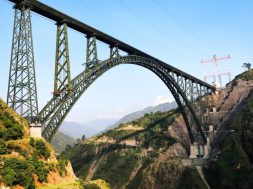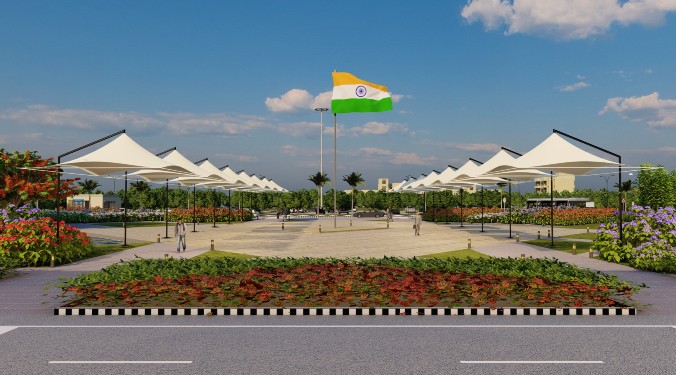Developing next generation of tall buildings systems
Dr. Ahmad Abdelrazaq is Senior Executive Vice President and the Head of the Highrise and Complex Building Division at Samsung C & T Corporation, Seoul, Korea. He is expected to deliver a presentation on ‘full scale structural health monitoring programs for high rise and complex buildings’ at the R. N. Raikar Memorial International Conference in Mumbai. Excerpts from his interview:
You have been with Samsung for some time now. How has your journey been? Since joining Samsung in 2004, I have overseen the Division transition from a traditional construction-only provider into the successful design-build, pre-construction, value engineering, and fast track design/construction for high-rise and complex buildings.
I have been involved in many projects at Samsung. Most notably I have been involved in all aspects of construction planning, pre-construction services, and structural design of the Burj Khalifa, Jumeriah Gardens in Dubai, Samsung HQ, Seoul, the 151-storey Inchon Tower, and the Yongsan Landmark Tower (620-metre, 111-storey tower) in Seoul.
Presently, I am directly involved in the design and construction of several mixed-use high-rise and complex building projects in Asia and the Middle East, including the Worli development project, Mumbai.
Why are you participating at the R. N. Raikar Memorial International Conference to be held in Mumbai?This conference is a celebration of the accomplishment of giants in the concrete industry; those who have contributed significantly to where we are today. The caliber of the people attending the conference will no doubt allow me to exchange significant information that is critical to what we do today and to what the future may hold. I had the opportunity to work with some of these giants and this conference will allow me again to meet them under a single roof.
What are your expectations from this conference?This conference will allow me to share knowledge, information, and allow me to have a better understating of the future direction of the concrete industry and best practices from the giants of our industry. I will always try to find real application for what we design and build.
Why have you chosen the topic that you have?I have chosen two topics to speak about at the conference, which I believe are dear to every engineer in terms of getting feedback on the works that we do in our professional careers. Engineers design many buildings through their professional careers, but most are not able or never able to correlate their design to the actual response and behaviour of the building to forces imposed on them during their life, including, but not limited to gravity and lateral loads.
This paper takes the reader into a journey of my involvement as the senior structural engineer of the project responsible for developing the structural and foundation design of the tower, to being involved in the construction as the chief technical director of the project and in developing the construction planning, logistics, execution strategy, evaluation of the building structure as we build for the entire project, and ensuring that the project is delivered to the highest quality and standards, and being able to conceptualise and execute one of the most comprehensive real time structural health monitoring programs of its kinds, that gave me a complete feedback on the structural behaviour of the building in all aspects – starting from the foundation to the tip of the pinnacle at 828-metre above the ground. Therefore, I had the luxury to design, build, and still continuously test the tallest man made structure in the world.
I hope that sharing my experience of Burj Khalifa with engineers, building authorities, owners, developers etc. may give them the opportunity to impose such programs for all essential and important facilities. This will potentially give us feedback on the building we design and improve on them on the future with great assurances. I am now testing the building in full scale and there is no better way to do it.
Please give us a brief description of your paper. My paper is titled – ‘Validating the structural behaviour and response of Burj Khalifa: full scale structural health monitoring programs’. A new generation of tall and complex buildings reflects the latest developments in materials, design, sustainability, construction, and IT. While design complexity can be managed through advances in structural analysis tools and software, ultimately the design of these buildings still relies on minimum code requirements that are yet to be validated in full scale.
My involvement in the design and construction of Burj Khalifa from inception until completion prompted me to develop an extensive survey and real-time structural health monitoring program to validate the assumptions made during the development of the design and construction planning of the tower.
At 828-metre, Burj Khalifa is the world’s tallest man-made structure, composed of 162 floors above grade and 3 basement levels. The focus of my paper is to provide a brief description of the structural and foundation system of the tower and to discuss the development of the survey and real-time Structural Health Monitoring Programs (SHMP). Correlation between the predicted and actual measured structural behaviour will also be discussed, however, because of confidentiality the actual measured data cannot be disclosed at this time.
SHMP developed for Burj Khalifa includes: • Monitoring the tower’s foundation system• Monitoring the foundation settlement• Measuring the column/wall strains and shortening during and after construction• Real time measuring of the tower lateral displacement and dynamic characteristics during construction• Measuring the building lateral movement under lateral loads (wind, seismic) during construction• Measuring the building displacements, accelerations, dynamic characteristics, and structural behaviour during service life• Monitoring the pinnacle dynamic behaviour and fatigue characteristics.
While the SHMP developed for Burj Khalifa was a futuristic model at the time of its development, this field is constantly evolving and a new generation of SHM systems will emerge that uses the latest technological advances in devices and IT technologies.
Can you share some industry developments related to the subject you intend to present?Presently, in China, there are similar programs being executed and that may follow the same program presented in this paper. There are only few buildings in the world that have been designed, constructed, and monitored by the same engineer. This provided a complete and rare loop of linking the design to final behaviour from the point of view of the original designer’s perspective. The idea is to validate all the assumptions made in the design and to give assurances how to build better and push the limits to the next level while developing the next generation of tall buildings systems.
From the Indian context, what is the importance of discussing ‘full scale structural health monitoring programs’ for high rise and complex buildings’?Placing monitoring program intended for highrise building is essential to all special projects and essential facilities. It is the best way to give the building owners, authorities, assurances about the building behaviour and immediate feedback about the well being of these buildings in case of major events such as typhoons, hurricanes, seismic events, etc. I cannot think of any better method and the cost of such system is very minimal.
Placing monitoring program intended for highrise building is essential to all special projects and essential facilities. It is the best way to give the building owners, authorities, assurances about the building behaviour and immediate feedback about the well being of these buildings in case of major events such as typhoons, hurricanes, seismic events, etc.
Cookie Consent
We use cookies to personalize your experience. By continuing to visit this website you agree to our Terms & Conditions, Privacy Policy and Cookie Policy.









